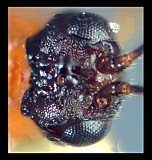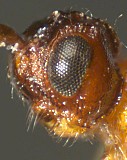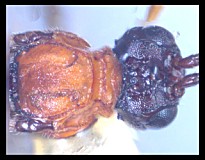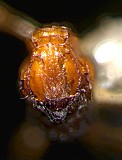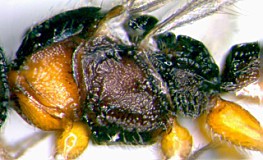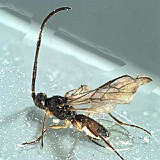Type locality of type species: Germany; type specimen presumably lost.
Valid genus
Ademon Haliday, 1833
The Nearctic species of Ademon have not been adequately differentiated. Females of one species, Ademon satanus Fischer, 1965, are readily distinguished by the distinctly longer ovipositor. Though not noted in previous studies, the pronotal collar in dorsal view also lacks the deep, rectangular pits seen in the other two previously described species. Figures 4 and 5 illustrate the deep pits for Ademon ovalis Fischer, 1965. Ademon ovalis and Ademon niger (Ashmead, 1895) have been differentiated largely by color and by the sculpture and shape of abdominal terga. Unfortunately, we have discovered that all three characters are variable. Our initial assessment suggests that there is sufficient variation between sexes of the same species to preclude unequivocal use of these characters.
There are no specimens currently determined for this OTU, or those specimens determined for this OTU are not yet mappable.
This material is based upon work supported by the National Science Foundation/PEET under Grant Number DEB 9712543. Any opinions, findings, and conclusions or recommendations expressed in this material are those of the author(s) and do not necessarily reflect the views of the National Science Foundation.

